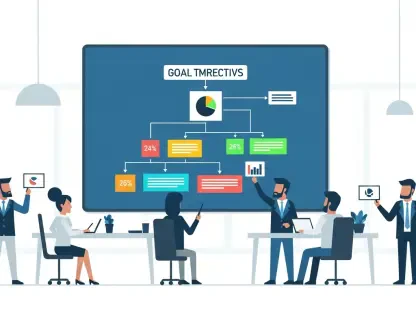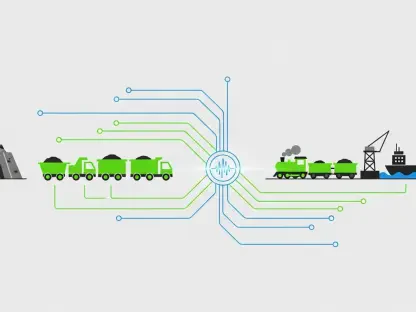In an era where cyber threats loom larger than ever, with software vulnerabilities often serving as the gateway for devastating breaches, the urgency to secure the digital landscape has never been more critical, especially as software supply chains, once considered a niche concern, have become a focal point for attackers seeking to exploit weaknesses in development processes. Amid this escalating challenge, the U.S. Department of Commerce’s National Institute of Standards and Technology (NIST) has stepped forward with a groundbreaking initiative to fortify software security. Through a newly formed consortium and a set of draft guidelines, NIST is paving the way for a more resilient approach to software development. This effort not only addresses immediate risks but also aligns with broader national cybersecurity goals, promising to reshape how organizations build and maintain trustworthy software in a world increasingly dependent on digital infrastructure.
Strengthening the Foundation of Software Security
Building a Collaborative Framework for Change
The cornerstone of NIST’s initiative lies in the establishment of the Software Supply Chain and DevOps Security Practices Consortium, a collaborative effort led by the National Cybersecurity Center of Excellence (NCCoE). Comprising 14 member organizations, this group is tasked with creating comprehensive guidelines that enhance security across the entire software development life cycle—from planning and coding to deployment and ongoing maintenance. This consortium operates under the directives of a significant White House Executive Order aimed at bolstering national cybersecurity. By bringing together diverse expertise, the initiative ensures that the resulting guidelines are not only theoretically sound but also practically applicable across various industries. The focus is on creating a unified approach that integrates security as a fundamental component rather than a secondary consideration, addressing the complex challenges of modern software ecosystems with a proactive mindset.
Aligning with National Cybersecurity Priorities
A key aspect of this effort is its alignment with overarching national goals to safeguard critical digital infrastructure. The consortium’s work directly supports mandates to strengthen cybersecurity on a federal level, reflecting a growing recognition of software security as a pillar of economic stability and national defense. By prioritizing the development of secure software practices, NIST aims to mitigate risks that could compromise sensitive data or disrupt essential services. This strategic alignment underscores the importance of a cohesive national response to cyber threats, where public and private sectors collaborate to build resilience. Furthermore, the initiative seeks to establish benchmarks that can be adopted widely, ensuring that even smaller organizations with limited resources can implement robust security measures. This holistic vision marks a significant shift toward embedding security into the fabric of software development culture.
Crafting Practical Guidelines for Secure Development
Leveraging the Secure Software Development Framework
Central to NIST’s approach is the Secure Software Development Framework (SSDF), which serves as the foundation for the consortium’s guidelines. This framework provides high-level practices for secure software creation, but its broad scope has often left organizations seeking more specific implementation strategies. To bridge this gap, the NCCoE has released a preliminary draft titled Secure Software Development, Security, and Operations (DevSecOps) Practices as a NIST Special Publication. This draft offers an initial overview of the project, with future iterations expected to include detailed reference models and tailored strategies for diverse use cases. By incorporating commercial technologies, artificial intelligence, and zero trust principles, the guidelines aim to foster development environments that are both secure and efficient. The ultimate goal is to enable organizations to produce software that is resilient against breaches while maintaining speed and reliability in delivery.
Focusing on Proactive Vulnerability Mitigation
Another critical focus of the draft guidelines is the prevention of vulnerabilities throughout the software development process. Experts involved in the project emphasize that risks often arise during collaborative coding, particularly when developers integrate external libraries or third-party components. To counter this, the forthcoming guidelines will detail best practices such as rigorous code scanning to identify potential weaknesses before they can be exploited. This proactive stance reflects a broader consensus that security must be embedded from the earliest stages of development rather than addressed as an afterthought. By outlining methods to secure development environments and protect against unauthorized access, the guidelines aim to minimize the introduction of malicious code or exploitable flaws. This approach not only enhances trust in software products but also reduces the costly remediation often required after a breach occurs.
Encouraging Public Input and Iterative Progress
NIST’s commitment to inclusivity is evident in its approach to developing these guidelines through public engagement. The agency has opened the preliminary draft for comments, with a deadline set for later this year, and plans to release subsequent versions for further input. A virtual event scheduled for this summer will also provide a platform for stakeholders to discuss the project’s objectives and offer feedback. This iterative process ensures that the guidelines evolve based on real-world insights and diverse perspectives, making them more adaptable to varying organizational needs. By fostering an open dialogue with industry professionals and other interested parties, NIST aims to create a framework that is both comprehensive and practical. Such collaboration is vital for addressing the nuanced challenges of software security in an environment where threats are constantly evolving and becoming more sophisticated.
Reflecting on a Path Forward for Cybersecurity
Lessons from a Unified Effort
Looking back, the initiative spearheaded by NIST and its consortium partners represented a pivotal moment in the journey toward robust software security. The establishment of a collaborative framework through the NCCoE brought together expertise from multiple sectors, ensuring that the guidelines developed were grounded in practical realities. This effort tackled the pressing need to secure software supply chains at a time when cyber threats were growing in complexity. By aligning with national cybersecurity mandates, the project underscored the critical role of secure development practices in protecting both public and private interests. The focus on integrating security from the outset, rather than as a reactive measure, set a precedent for how software should be built in a digital age fraught with risks.
Charting the Next Steps for Implementation
As the guidelines took shape, the emphasis shifted to actionable implementation across diverse environments. The iterative feedback process, which included public comments and virtual discussions, helped refine the framework to address specific vulnerabilities and emerging threats. Organizations were encouraged to adopt these practices by leveraging available technologies and zero trust methodologies to safeguard their development processes. Moving forward, the challenge lay in ensuring widespread adoption, particularly among smaller entities with limited resources. NIST’s commitment to ongoing collaboration and periodic updates to the guidelines promised a dynamic approach, one that could adapt to future challenges. This forward-thinking strategy aimed to build a lasting culture of security, where software resilience became a shared responsibility across industries.









